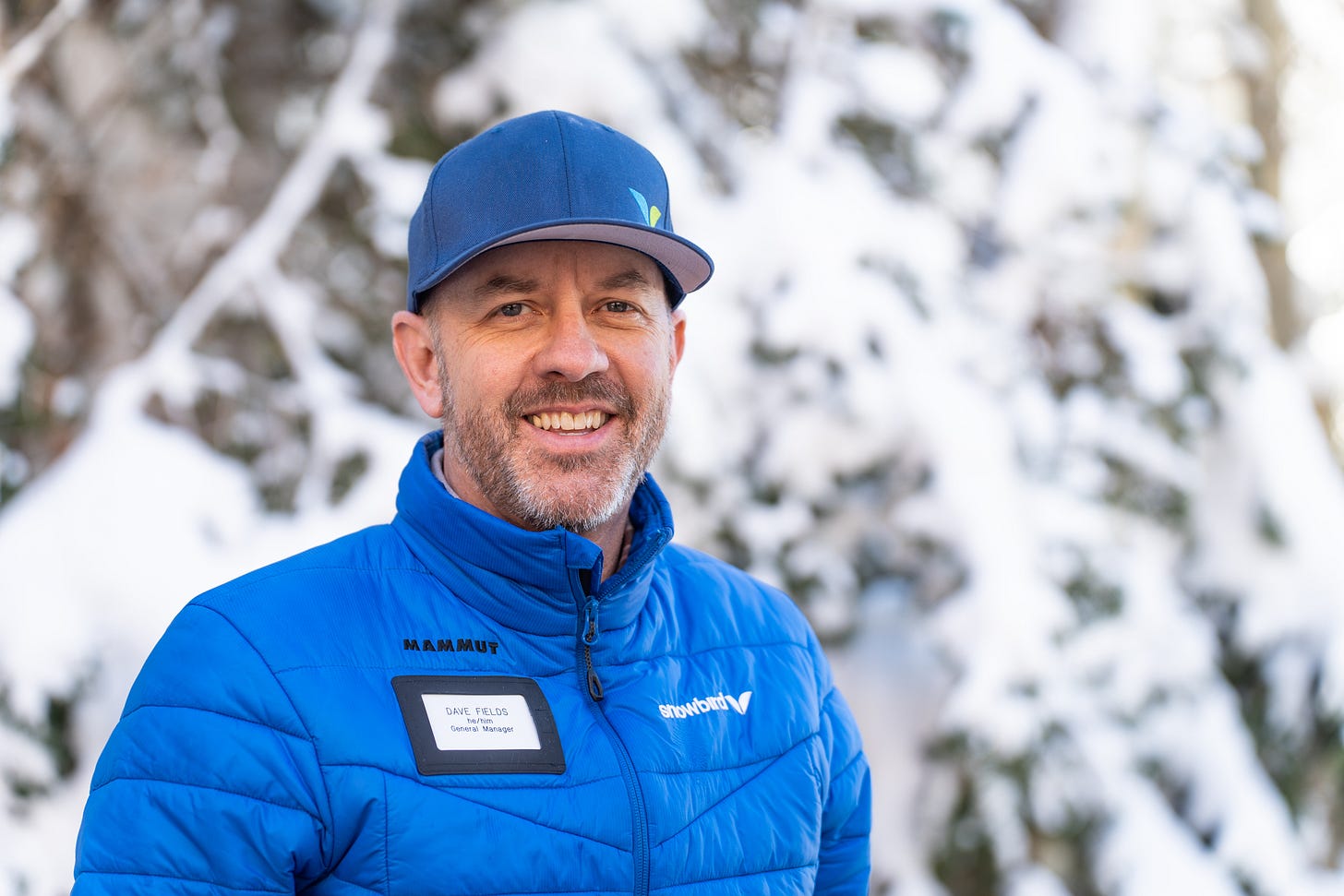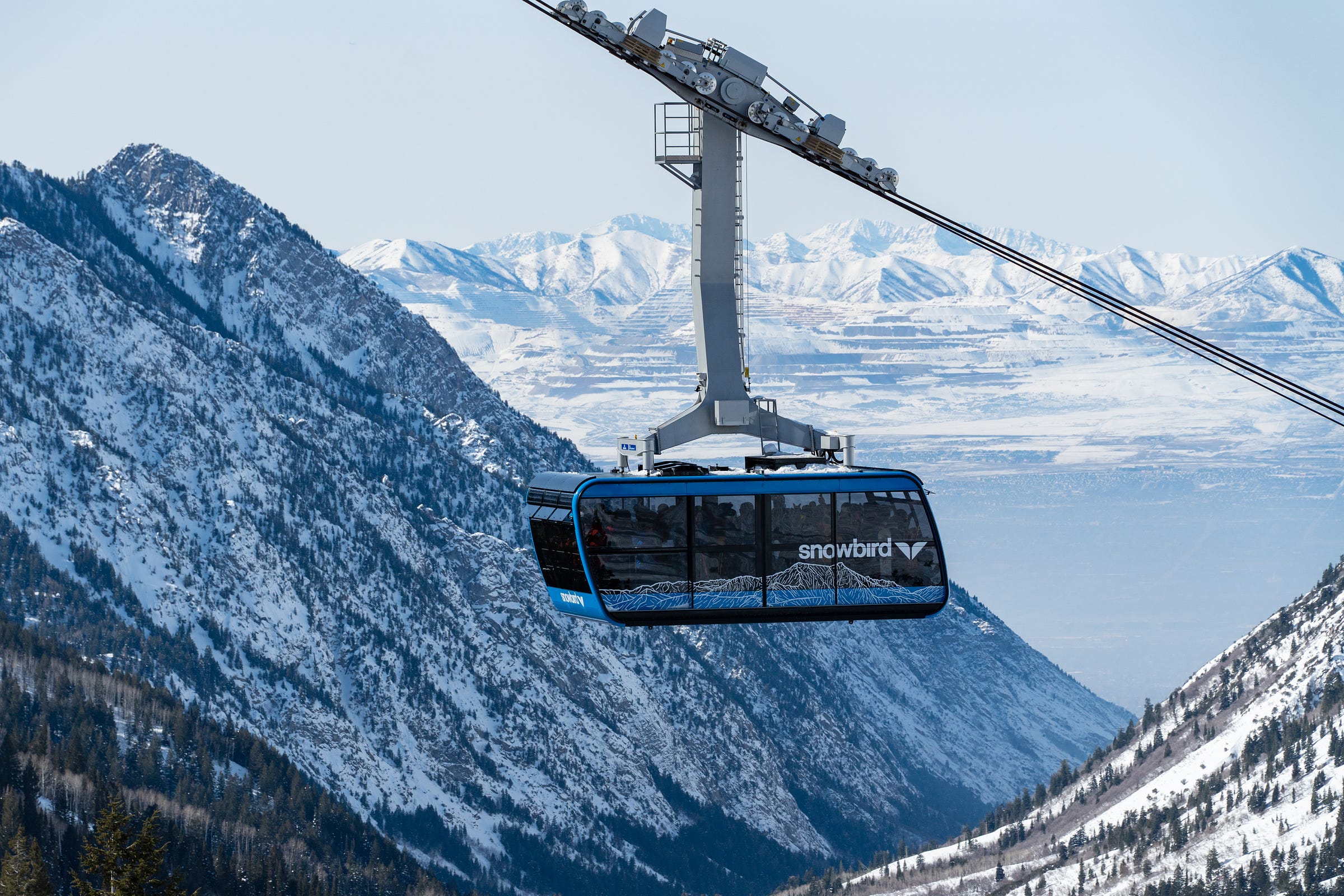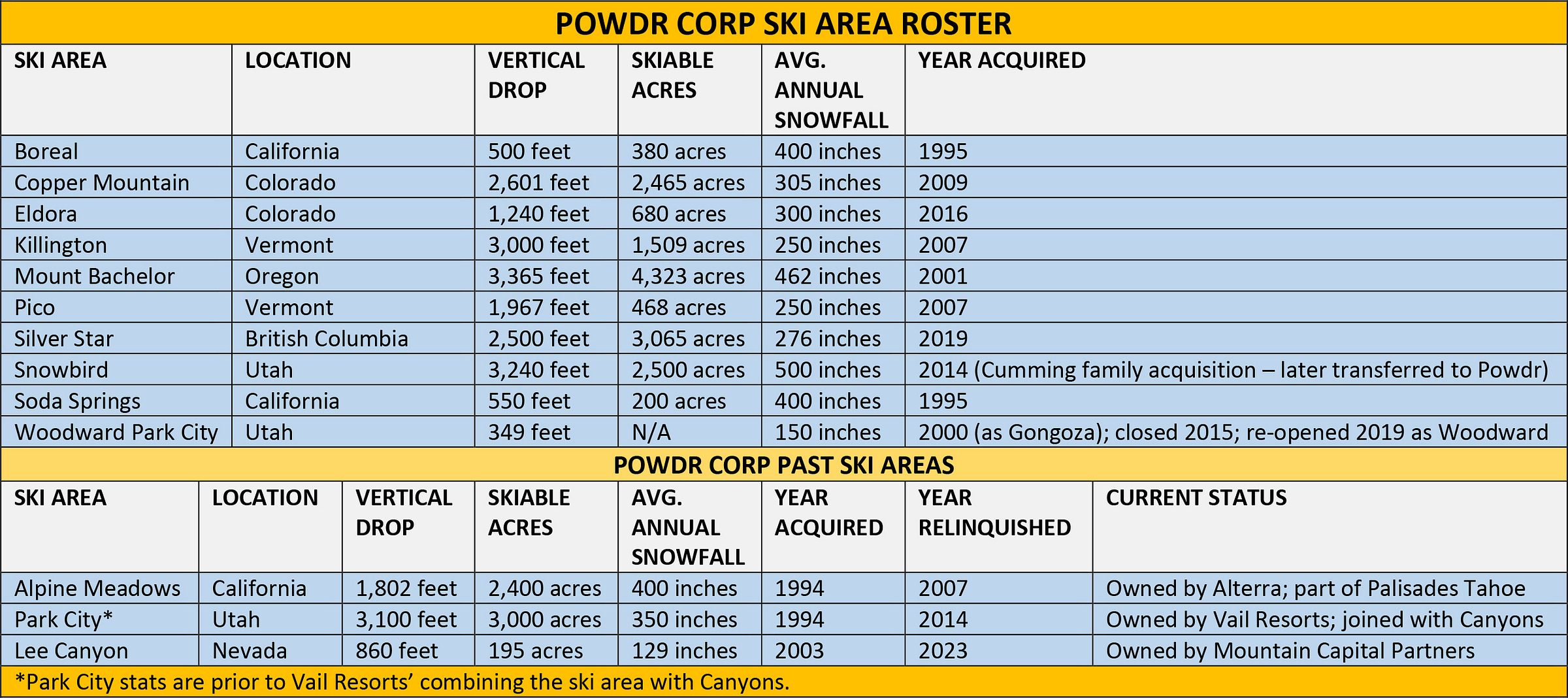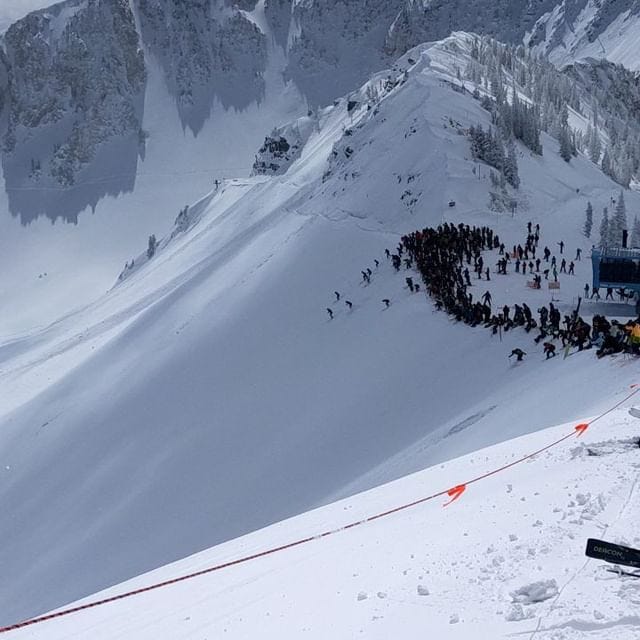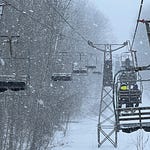Who
Dave Fields, President and General Manager of Snowbird, Utah
Recorded on
September 18, 2023
About Snowbird
Click here for a mountain stats overview
Owned by: Powdr
Located in: Snowbird, Utah
Year founded: 1971
Pass affiliations:
Ikon Pass: 7 days, shared with Alta, no blackouts
Ikon Base Plus Pass: 5 days, shared with Alta, holiday blackouts
Ikon Base Pass: 5 days, holiday blackouts
Mountain Collective: 2 days, no blackouts
Altabird: unlimited access
Closest neighboring ski areas: Alta (1 second), Solitude (:39), Woodward Park City (:39), Brighton (:42), Park City (:47), Deer Valley (:55) - travel times vary dramatically depending upon weather and time of day and year.
Base elevation: 7,760 feet (at Baby Thunder)
Summit elevation: 11,000 feet (at Hidden Peak)
Vertical drop: 3,240 feet
Skiable Acres: 2,500
Average annual snowfall: 500 inches
Trail count: 140 (35% most difficult, 38% intermediate, 27% beginner – this is the official breakdown by trail name; anyone who has skied Snowbird knows that the count is closer to 99% Oh Shit, 1% for mortals)
Lift count: 14 (1 tram, 6 high-speed quads, 4 doubles, 3 conveyors)
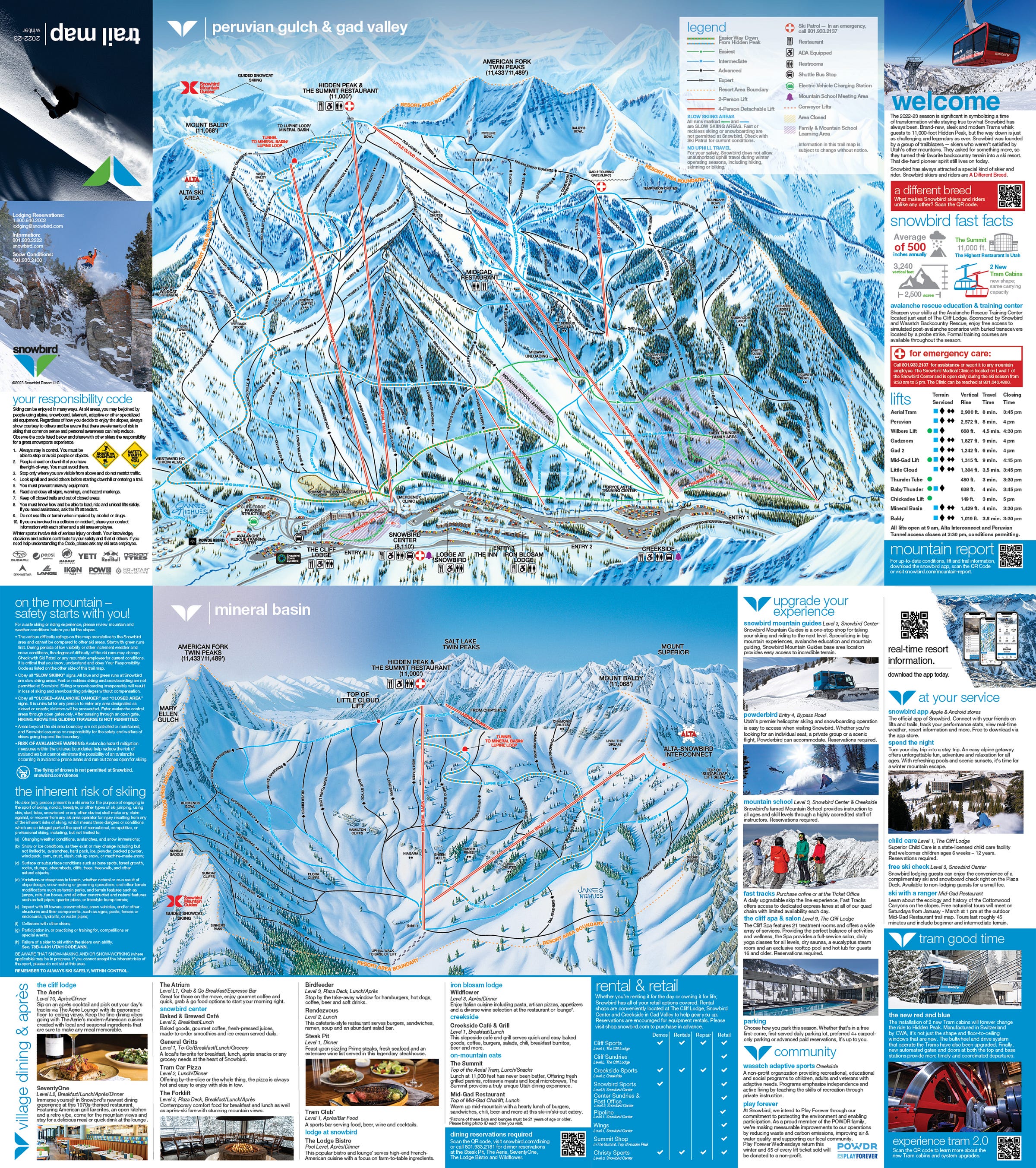
Why I interviewed him
Since I’ve skied hundreds of ski areas and I write about them incessantly, people often ask me which one is the best, or at least which is my favorite. It should be a hard question to answer. Nothing else in America delivers the drama of Big Sky, the energy of Palisades Tahoe, the aura of Aspen-Snowmass, the sprawl of Vail Mountain. How could I possibly choose a winner? But it is not a hard question to answer. Because the answer is Snowbird and Alta. And nothing else comes close. Not in Utah. Not in Colorado. Not in Tahoe. Not up and down the Rockies. Not in Alaska. Not in BC. Yes, I’m including Whistler. There is no better skiing.
One lift to the top. Three thousand feet of sustained pitch. Five hundred inches of snow – on average. Last season, 838. That’s more snow than the Poconos have tallied in every winter since the Lincoln Administration, combined. And all of it like a bag of cottonballs, so light it’s a wonder the stuff doesn’t float off into the sky. The terrain: vast, varied, labyrinthian, mesmerizing, scarcely groomed. Trees like Narnia, spaced for loping pow turns, chained one to the next by snow meadows smooth and ever-rising. Big open bowls. Chutes stacked off The Cirque like weapons arrayed along an armory wall. Hidden Peak. Mineral. Baldy up top. Alta through the gate. Amazing.
That such a place exists at all is a stunning confluence of a dozen natural phenomena. That this snowy freefall sits not in some sawtoothed Alaskan range 600 miles from the nearest road, but 34 miles – half of it interstate – from a major international airport is one of the most amazing facts that I’m aware of. And I’ve witnessed human birth. Twice.
Snowbird is so good that it’s hard to imagine how we’d think about great ski areas if it didn’t exist. Like contemplating the best basketball player if there’d been no Michael Jordan, or arguing over the best way to light a room prior to the invention of lightbulbs. Whatever you think of as the attributes of a great ski area - and by that I mean the skiing, not the shopping or the apres or the wacky tire-tube races - Snowbird transcends them all.
Of course, Alta, as a brand and as an organized ski hill, was there first (by 33 years), and it shares Snowbird’s every attribute, with a bit more soul and a bit more snow and a bit less flash and lift-served vert. Part of the Snowbird mystique is proximity to – and the direct connection with – its atmospheric neighbor. If Snowbird stood alone on some Utah steppe, perhaps it would not be so easy to notch the mountain above its peers. But the interplay of the two, their vastness and mystery, their videogame-like tap-dancing between realms, their surreal Cloud City patina, creates, in their fusion, the best version of skiing that we have.
What we talked about
Living through 838 inches of snow; what happens when hundreds of employees have to spend the night to make sure the mountain can open; why Alta gets more snow than Snowbird; assessing Snowbird’s new tram cars and related upgrades; why Snowbird didn’t build an all-new tram; catastrophe installing the new tram cars; “I’ve never had an ocean-liner tracker on my phone until this came to pass”; dealing with disappointment; reminiscing on the mysterious pre-Olympics Utah; the legacy of Snowbird’s former longtime GM, Bob Bonar; the transition from independent resort to member of Powdr; “I’m amazed at how quickly the marketplace has changed” from a multi-mountain pass point of view; why Snowbird didn’t join the Mountain Collective for its inaugural season in 2012; why Snowbird and Alta joined the Ikon Pass as one combined “destination”; why Snowbird didn’t follow Alta off the Ikon Base Pass and whether they’ll reconsider that decision; how much we can really blame the Ikon Pass for LCC crowding; why the Altabird pass soared in price for 2023-24; Snowbird’s “Freeloader” Pass; reflecting on Fast Tracks two years in; why the tram is excluded from Fast Tracks and whether that will continue to be the case; the potential for a Fast Tracks season pass at Snowbird (which Copper and Killington already sell); breaking down the proposed Little Cottonwood Canyon Gondola; “the highway only works as well as the worst car and bus in it”; why this lift would be the least-impactful solution to LCC traffic; paying for the gondola; how the gondola would alter the calculus of canyon closures; “the more people learned about gondola and how it works, the more they supported it”; the current state of the proposed Mary Ellen Gulch expansion; upgrading Wilbere to a new lift on a new line; potential to develop more green terrain at Snowbird; potential for a six-pack lift at Snowbird and where it could go; and phasing out the howitzers.
Why I thought that now was a good time for this interview
From 1992 to 2002, Utah recorded around 3 million skier visits per winter, plus or minus a couple hundred thousand. Then the Olympics hit. And the world was like, “Damn.” Like aliens had landed and shown them how to teleport. Or turn pinecones into pterodactyls. Or something else that would be as amazing as seven giant ski areas that all average 300-plus inches of fluffy light snow per winter being situated two sitcoms’ drive-time from a major airport.
By the 2005-06 ski season, four years after the Games, Utah skier visits crested 4 million for the first time. Which seemed amazing until the Ikon Pass landed for the 2018-19 season, the same winter that Utah skier visits (coincidentally or not), blew past 5 million for the first time. Setting aside the Covid-shortened 2019-20 ski season, they just kept accelerating, hitting an astonishing 7.1 million skier visits last winter.
Whether you blame the Olympics or the megapasses or the fact that Utah’s population has grown by more than a million people (a 50 percent surge) over the past two decades, the state’s ski areas – and only 14 are public facilities that can manage any kind of volume – are getting crushed.
Luckily, unlike Washington, where a surging population has no choice but to deal with traffic or drive to Idaho, Utah has no shortage of potential solutions to its high-altitude cluster. Deer Valley recently outlined plans to nearly triple in size. A proposed passenger train could thin traffic on Park City’s cluttered roads. And the Utah Department of Transportation recently ruled that a gondola from the mouth of Little Cottonwood Canyon to the base of Snowbird and Alta was its preferred option to combat the untenable traffic on State Route 210.
The gondola would be eight miles long and run high over the road, skirting the firing squad of 50 avalanche paths that run through the canyon. The highway has “the highest uncontrolled avalanche hazard index of any major highway in the world,” University of Utah professor Jim Steenburgh told KSL News Radio in April. Snowbird is in favor of building the gondola. So is Alta. Here’s an overview:
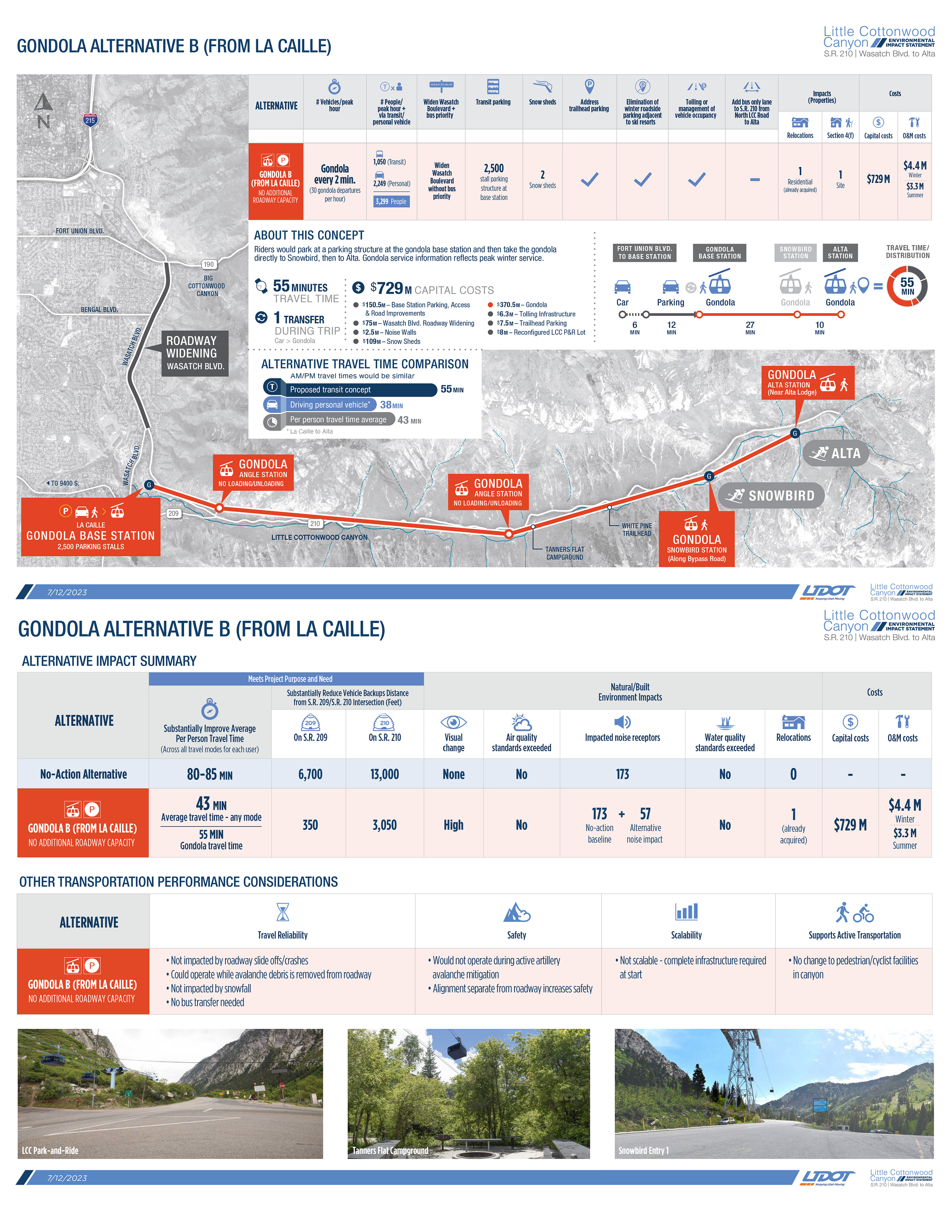
And a little explainer video:
Just about anywhere else in the world, the gondola would be viewed for what it is: a rational solution to an untenable traffic problem. But this is U.S. America, and the lift has instead been recast as an existential threat to both the natural and manmade worlds. I can’t even mention it on Twitter without sending a dozen Brobots into fits of feral rage. It’s weird. SR-210 would never be built today – the most disruptive possible thing humans can build into the wilderness is a paved road. But this avalanche-prone, congested scar of concrete has been strangely lionized as the only acceptable conduit to the end of the canyon, while the gondola, a light-footprint machine with 22 towers that would run high above the rich natural environment on the canyon floor, is demonized.
That’s the reality that Snowbird officials are dealing with coming off a record snow season. In our conversation, Fields goes deep into this project, which is unquestionably the most controversial in U.S. American skiing. He has thoughts for the buses-will-fix-it crowd, for the environmental-doomsday crew, for the fiscal hawks fretting over the cost. I could write a book on this, but Fields makes a compelling argument to just build the damn thing.
Questions I wish I’d asked
I’ve always been curious why the Peruvian lift terminates where it does, rather than hoisting skiers up to High Baldy Traverse, or even making a turn up Baldy itself. The answer, I’m sure, is some combination of wind and desire to preserve a high-altitude hike-up experience. But that tunnel cutting over to Mineral couldn’t have been cheap, and I’d like to hear the story behind how they landed on that configuration.
What I got wrong
I said that Snowbird had secured approval for the proposed Mary Ellen Gulch expansion from the U.S. Forest Service, but that approval actually came from the Utah County Board of Adjustment.
Why you should ski Snowbird
Snowbird is the closest thing I’ve found to a perfect ski area. For capable skiers. Don’t bother if you’re a groomer god, or if you haven’t skied - or don’t like to ski - powder or bumps, or if carving Chip’s Run with half the population of Texas doesn’t sound fun (it isn’t). I say that not to be an a-hole, but because I don’t want you to be disappointed. Snowbird is only fun if you’re a very good skier. And by that I mean a very good skier on ungroomed terrain. Because the mountain doesn’t groom much. And if you’re not so good, but you think you are, well, the mountain will have some news for you.
It will have a message for you, regardless. This place is savage. Respect the double-blacks. Because Man do they mean it. There is no bailout on The Cirque, no cat-track oopsie-doodle exit. Move too far the wrong way and find yourself staring down Wilma’s or Mach Schnell, sheer cliffs disguised as ski trails, mandatory airs between you and your ride home. Chip’s is safe, but wander 50 yards off-trail and try not to miss the “Cliffs Ahead” signs. Because when Snowbird says “cliffs” they mean like 100-footers. And don’t ski alone into the trees – tree-well safety bulletins were practically invented for this place.
Please excuse me here. I’m usually allergic to tough-guy talk. But this place can kill you if you’re not careful. Once, a few years back, a group of us skied off Black Forest and into Organ Grinder, a swatch of wooded snowfields skier’s right off the Gad 2 lift. Organ Grinder, on the map, is a single run, a line arcing through Niehues whites. On the ground it is a multi-sheathed arsenal of fierce chutes stacked along a wooded face. After gliding through easy trees, we emerged at the top of one of these, a shot tilted at the approximate angle of a rocket launch. A four- or five-foot drop, a half-dozen steep turns to a wall of trees. Then the terrain cinched shut. The only exit a shot between trees and rock walls. Point and go.
The run is a single black diamond.
But put all that aside for a moment. Snowbird, and especially Snowbird together with Alta, should be the aspirational capstone for any skier driven to master this quirky sport. The vastness and quality and challenge of the terrain is absolutely unmatched anywhere in America. The two ski areas together are twice as large as Jackson and half as groomed as Palisades, with more and better snow than Whistler. And easier to get to than all of them. So go there. Just wait until you’re ready.
Podcast Notes
Miscellany on items discussed in the podcast:
On Jackson Hole’s tram
To lend context to our discussion around Snowbird’s tram upgrade, we talked quite a bit about Jackson Hole’s $31 tram project, which stretched from 2006 to ‘08. I could try to explain it myself, or you could just watch this series of videos:
On Powdr’s portfolio
Snowbird is one of 10 ski areas owned by Park City-based Powdr:
On the Mountain Collective
Fields said that one of his regrets was not joining the Mountain Collective’s inaugural class in 2012. The founding four were Alta, Jackson Hole, Aspen, and Palisades Tahoe. The pass cost $349 for two days at each ski area.
On the varying Snowbird/Alta access on Mountain Collective and Ikon
One of Mountain Collective’s selling points is that rather than combining Snowbird and Alta days, as Ikon Pass does, the pass gives you two days at each, with no blackouts. As Alta, Aspen, and others have backed out of the Ikon Base Pass, the Mountain Collective has become a potent Ikon Pass Base Base, with most of the pass’ top ski areas and a substantially lower price.
On rope-drop days on Mineral Basin
I don’t know if this is inspiring or hilarious or horrifying:
The Storm publishes year-round, and guarantees 100 articles per year. This is article 79/100 in 2023, and number 465 since launching on Oct. 13, 2019. Want to send feedback? Reply to this email and I will answer (unless you sound insane, or, more likely, I just get busy). You can also email skiing@substack.com.



